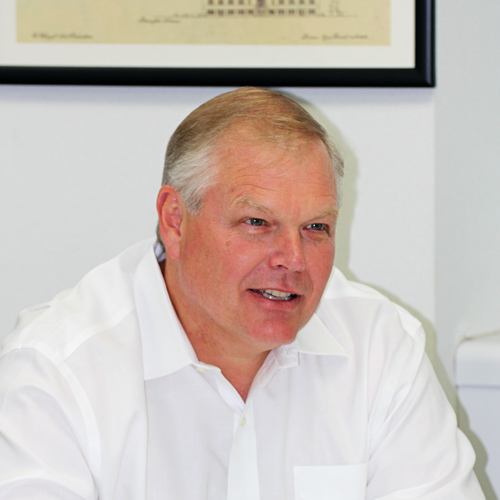It’s not inaccurate in either a cultural or a physical sense to say that Google is essentially everywhere. At any given moment, its familiar blue, red, yellow and green logo (in the proprietary font Product Sans) might be found on the majority of computer screens in America. It can also be found off-screen, affixed to the company’s far-flung properties, including 160 offices in 60 countries and 15 data centers in seven countries (including nine in the US).
These data centers allow Google to handle billions of search queries per day and store vast amounts of data, but they present a challenge from an environmental perspective, given that data centers are notoriously aggressive consumers of energy. Lawrence Berkeley National Lab, which studies energy technologies, projects that American data centers alone will consume 73 billion kilowatt hours—about 2 percent of total U.S. electricity consumption—by 2020.

Google—and its parent, Alphabet Inc.—recognized this problem early on when it committed to operating as a carbon neutral company in 2007, and it was specifically this long-held environmental consciousness that drew current lead for sustainability Kate Brandt, to join the company in 2015. She’s helping it pursue a number of sustainability initiatives, including several she’s tackling alongside the company’s real estate team that could have an impact on the built world as a whole.
Brandt first arrived at Google with an already impressively green resume. She had previously served as the federal chief sustainability officer in the Obama White House, and her time there was preceded by similar leadership roles in the US Energy and Defense Departments. She says she took the lead for sustainability position at Google—which encompasses the company’s worldwide operations and products—because it was “at the intersection point of technology and sustainability.”
Because of its size, reach, and influence, the company interacts with dozens of technologically advanced organizations in myriad industries to earn its sustainability cred. For example, in a partnership with Oceana and Skytruth, it enables tracking of illegal fishing activity around the globe through a data platform called Global Fishing Watch, launched in 2016. At the same time, the company pursues ambitious initiatives internally, including the “Zero Waste to Landfill” program for its data centers, through which the company upgrades or repairs servers in its data centers using refurbished parts salvaged from older equipment.
Additionally, the company announced in April 2018 that it now purchases more renewable energy than it consumes as a company, with contracts to annually purchase three gigawatts of output from wind and solar farms. That kind of investment is spurring development of new clean energy projects that other companies and communities will benefit from as well.
With its energy-intensive data centers and its many offices worldwide, Google’s especially interested in green building. But, rather than just using the best practices and materials available, it’s actually working to develop new methods and products to improve the sustainability of the building industry overall.
A new Google outpost about 1,800 miles east of the company’s Mountain View, California, headquarters, in Chicago, helps illustrate this. The seven-story, 350,000-square-foot retrofit of a former meat warehouse in the city’s Fulton Market district is a metaphor for the city’s transformation from its past—“Hog butcher for the world,” as poet Carl Sandburg famously wrote—to the present. The structure, including a sizeable glass-and-steel addition, earned three green certifications when it opened in 2015: LEED v4, Living Building Challenge, and WELL Building Standard.
Natural daylighting, in sync with wired lighting timed to the circadian rhythm; user-friendly open staircases; biophilic features; smart acoustics; and toxin-free building materials were used throughout the project.
“Fulton Market was the first Google office to receive the Living Building Challenge Materials Petal Certification,” Brandt says, adding that it’s the “leading healthy-materials certification for green buildings.” To earn it, the company used Portico, a building-materials analysis and decision-making tool developed by Google in partnership with the Healthy Building Network. Brandt says it enables “everyone involved in a construction project, from owners and designers to contractors and manufacturers, to leverage the data in Portico to find healthy materials and improve indoor environments.”
Portico integrates with typical design and construction processes, syncing with project-management, product-research, and product-information requests. With more than 30,000 building products in its database—2,500 of which have satisfied Google’s healthy material requirements—the program allows users to search for and compare materials and their health and environmental characteristics.
The company’s mission to build healthier and greener structures extends to foundations and rooftops as well. Foundations, walls, and service cores of structures are all typically made of concrete, but coal fly ash—which contains arsenic, mercury, lead, and other heavy metals—is still a component of the slurry that hardens into the building surfaces all around us.
A substitute for fly ash might be recycled glass, and Google is exploring this along with the Ellen MacArthur Foundation and Unilever. “Replacing coal fly ash in concrete with post-consumer glass helps to minimize exposure to heavy metals and other potentially toxic components in concrete, especially during the renovation and demolition of buildings,” Brandt says. “So far, we’ve poured one glass-in-concrete pilot site in Mountain View, and we are exploring opportunities to incorporate glass-in-concrete elements into one of our new campus development projects.”
On rooftops, Google would like to see all building owners everywhere take advantage of solar power. To this end, it has again employed its own technology and data streams to provide a solid estimate of how much electricity can be generated from virtually any roof in America. Its Project Sunroof tool uses Google Earth 3-D imagery and accounts for roof direction, angle of tilt, the presence of shade, and weather patterns to provide a quick calculation of the cost and ROI of solar-panel installations anywhere, and it also offers information on nearby installers. Users have already used it to game out solar-panel installations on some 60 million rooftops in 50 US states and Germany.
Project Sunroof is free, and like many of Google’s other green endeavors, it will benefit others as much as it benefits Google itself. The company will continue to promote widespread use of sustainable building practices, and because of this, perhaps one day rooftop solar panels and glass-in-concrete foundations will be as ubiquitous as its logo.
Google’s Sustainability Story, In Numbers
22: Percentage of the components of old servers that the company reused last year for machine upgrades
36: Percentage of its servers that are remanufactured machines
50: Percentage of energy used by its data centers, compared to the industry average
40: Percentage by which it has reduced its potable water use since 2013
0: Percentage of waste sent to landfills from its Mayes County, OK, data center in 2016
86: Percentage of data center waste it diverts to reuse or recycling globally each year
98: Percentage reduction in greenhouse gas emissions per user of Gmail, versus a user running email on a local server
$2.5 billion: Amount Google has invested in renewable-energy projects since 2010
3,000: Pounds of rescued imperfect fruit and vegetables it has used in its Bay Area employee cafes
9.3 million: Square feet of Google office facilities that have achieved LEED certification
2 million: Users that have accessed Google’s Project Sunroof tool to calculate the cost of solar-panel installation
Mecho has been proud to work with Ms. Brandt in her quest to create spaces that allow Googlers to feel their best. We look forward to continuing our support of her efforts with our shading systems which are comprised of healthy materials and provide natural daylight.


